Development of external surfaces of human cerebellar lobes in the fetal period
- PMID: 24831768
- PMCID: PMC4155164
- DOI: 10.1007/s12311-014-0566-3
Development of external surfaces of human cerebellar lobes in the fetal period
Abstract
In the fetal period, development of cerebellar lobes may proceed dissimilarly due to possible differentiated origins of the cells and diversified times of their migration to certain cerebellum regions. This can cause various growth trajectories for the external surfaces of cerebellar lobes. The goal of the study was to describe the development of the external surface of cerebellum lobes and fissures delineating them in the fetal period. The material consisted of 101 fetuses (48 males and 53 females)-crown rump length 89-229 mm corresponding to 15-28 weeks of fetal life. The methods were based on anthropometric measurements and preparation techniques combined with elicited image computer analysis. At the largest values of the cerebellum posterior lobe surface, the most dynamic growth rate was observed in the case of the anterior lobe. Among the cerebellar lobes, proportional change was observed as well as a gradual increase in anterior lobe surface area and a simultaneous decrease in the surface area of the flocculonodular lobe part of the cerebellum total external surface. This paper presents the different growth trajectories of cerebellar lobes and demonstrates the importance of the primary fissure as a delineating mark for two regions with different dynamics of development.
Figures
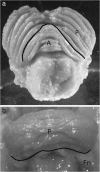
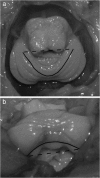
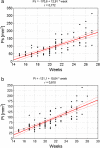
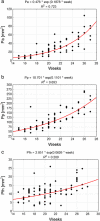
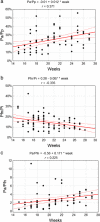

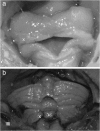
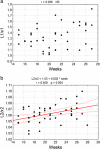
References
MeSH terms
LinkOut - more resources
Full Text Sources
Other Literature Sources

